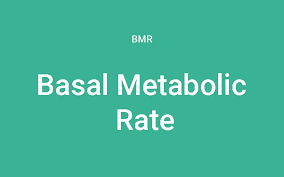Are you ready to take your fitness journey to the next level? Whether you’re an athlete aiming to improve your performance or someone looking to boost their overall health, understanding and enhancing your aerobic capacity is a critical step. In this comprehensive guide, we will explore the fascinating world of aerobic capacity and how you can leverage an aerobic capacity calculator to achieve your fitness goals. Join us on this journey towards better endurance, improved cardiovascular health, and a fitter you.
Aerobic Capacity Calculator
Result:
What Is Aerobic Capacity?
Before diving into the specifics of aerobic capacity calculators, let’s establish a solid foundation by understanding what aerobic capacity means.
Defining Aerobic Capacity
Aerobic capacity, often referred to as cardiorespiratory fitness or VO2 max (maximum oxygen uptake), is a measure of your body’s ability to take in oxygen, transport it to your muscles, and utilize it during physical activity. In simpler terms, it reflects your endurance level and how efficiently your cardiovascular and respiratory systems work together.
Incorporating aerobic exercise into your routine, such as running, cycling, swimming, or brisk walking, can significantly enhance your aerobic capacity over time. The higher your aerobic capacity, the more oxygen your body can deliver to your muscles during exercise, allowing you to perform better and for longer durations.
The Significance of Aerobic Capacity
Aerobic capacity isn’t just a metric for athletes; it plays a vital role in overall health and well-being. Here’s why it matters:
1. Enhanced Physical Performance
A high aerobic capacity enables you to perform better in various physical activities. Whether you’re an athlete striving to break personal records or simply aiming to keep up with your kids during playtime, improved aerobic capacity can make a significant difference.
2. Cardiovascular Health
Aerobic exercise, which directly impacts aerobic capacity, is known to strengthen your heart muscle, lower blood pressure, and improve cholesterol levels. This, in turn, reduces the risk of cardiovascular diseases such as heart attacks and strokes.
3. Weight Management
Engaging in aerobic activities can help you burn calories more efficiently, making it an essential component of weight management and fat loss. It can contribute to achieving and maintaining a healthy body weight.
4. Mental Well-being
Regular aerobic exercise has been linked to improved mood and reduced symptoms of anxiety and depression. It promotes the release of endorphins, often referred to as “feel-good” hormones, which can positively impact your mental well-being.
Now that we understand the significance of aerobic capacity, let’s explore how you can measure it and, more importantly, how to use an aerobic capacity calculator to do so.
Measuring Aerobic Capacity – Aerobic Capacity Test
Aerobic capacity is typically measured in terms of VO2 max, which represents the maximum volume of oxygen your body can consume per minute during intense exercise. This measurement is considered the gold standard for assessing cardiovascular fitness.
Several methods are used to measure aerobic capacity, with the most common being:
Treadmill Test: This involves running or walking on a treadmill while your heart rate, oxygen consumption, and carbon dioxide production are monitored. The test continues until you reach your maximum effort or exhaustion.
Cycling Test: Similar to the treadmill test but performed on a stationary bike, it measures the same variables—heart rate, oxygen consumption, and carbon dioxide production.
2.4 km (1.5-mile) Run Test: This is a simpler field test, where you run 1.5 miles as fast as you can. Your time, age, and gender are used to estimate your aerobic capacity.
Submaximal Tests: These tests involve less intense activities, like walking or jogging, and are suitable for people with limited fitness levels. They can estimate aerobic capacity without pushing you to exhaustion.
5. Aerobic Capacity Calculator
Aerobic capacity calculator, also known as VO2 max calculator, offer a convenient way to estimate your VO2 max without the need for laboratory tests or field assessments. These calculators use mathematical formulas based on factors like age, gender, weight, and resting heart rate to provide a close approximation of your aerobic capacity.
Aerobic Capacity Calculator – How to calculate VO2 max?
Aerobic capacity calculators utilize various formulas to estimate your VO2 max. One of the most widely used equations is the Rockport Fitness Walking Test formula:
- Weight: Your body weight in pounds.
- Age: Your age in years.
- Gender: A numerical value (0 for females, 1 for males).
- Time: The time it takes you to complete a one-mile walk as quickly as possible.
- Heart Rate: Your heart rate immediately after completing the one-mile walk.
By inputting these values into the calculator, you can obtain an estimate of your VO2 max. Keep in mind that while this method provides a convenient estimation, laboratory testing remains the most accurate way to determine your exact VO2 max.

How to calculate VO2 max?
Let’s do an example calculation. For this purpose, we will use the one-mile walk test:
First, do the walking test
Measure your time and pulse. Let’s say that
walk time = 15 minand Pulse (beats/min):70Then, enter this data into the calculator. Moreover, additional information about your sex, age, and weight.
sex = male,age = 30 years,weight = 70 kgRead out your result.
VO2 max = 13.4 ml/kg/min
Using an Aerobic Capacity Calculator
Now that you’re familiar with the basics, let’s walk through the steps of using an aerobic capacity calculator:
Step 1: Gather Your Information
Collect the necessary data, including your weight, age, gender, the time it takes you to complete a one-mile walk at your fastest pace, and your heart rate immediately after the walk.
Step 2: Input Your Data
Visit a reputable aerobic capacity calculator website or use a fitness app that offers this feature. Enter the data you’ve collected into the calculator’s fields.
Step 3: Calculate Your Aerobic Capacity
Click the “Calculate” or “Estimate” button to process the information. The calculator will use the formula to provide an estimate of your VO2 max.
Step 4: Interpret the Results
Once you receive your estimated VO2 max value, you can interpret what it means for your fitness level. Compare it to age and gender-specific norms to gauge your cardiovascular fitness.
Aerobic Capacity Exercises
Boosting Your VO2 Max
To enhance your aerobic capacity, incorporate these exercises into your fitness routine:
Running: Whether it’s steady-state running, interval training, or long-distance runs, running is an excellent way to improve your aerobic capacity.
Cycling: Riding a bike, especially uphill or at high intensity, challenges your cardiovascular system and increases oxygen consumption.
Swimming: Swimming engages multiple muscle groups and is a low-impact way to boost your aerobic capacity.
Jump Rope: A simple and effective exercise that elevates your heart rate and improves endurance.
Rowing: Rowing machines provide an excellent full-body workout and can significantly enhance aerobic capacity.
High-Intensity Interval Training (HIIT): HIIT workouts involve short bursts of intense exercise followed by brief recovery periods. They are highly effective in improving aerobic capacity.
Tips for Improving Your Aerobic Capacity
Whether your calculated aerobic capacity is in line with your fitness goals or below your expectations, there are ways to enhance it:
1. Engage in Aerobic Exercise
Incorporate regular aerobic activities such as running, cycling, swimming, or brisk walking into your routine. Aim for at least 150 minutes of moderate-intensity aerobic exercise per week.
2. Interval Training
Consider incorporating interval training into your workouts. Alternating between short bursts of high-intensity exercise and periods of lower intensity can help boost aerobic capacity.
3. Consistency Matters
Consistency is key when it comes to improving aerobic capacity. Stick to your exercise regimen over time to see lasting results.
4. Mix It Up
Variety in your workouts can prevent boredom and stimulate continued progress. Explore different aerobic activities to keep things fresh.
FAQ on Aerobic Capacity and Aerobic Capacity Calculator
Aerobic capacity, often measured as VO2 max, is a critical indicator of cardiovascular fitness and endurance. Here, we address some frequently asked questions about aerobic capacity and how to use an aerobic capacity calculator effectively.
How is aerobic capacity measured?
Aerobic capacity is typically measured through a VO2 max test. This test involves either running on a treadmill or cycling on a stationary bike while your heart rate, oxygen consumption, and carbon dioxide production are monitored. The test continues until you reach your maximum effort or exhaustion. Submaximal tests, like the 2.4 km (1.5-mile) run test, offer estimates of aerobic capacity without pushing you to exhaustion.
What factors influence aerobic capacity?
Several factors influence your aerobic capacity, including:
Genetics: Your genetic makeup plays a role in determining your potential aerobic capacity.
Training: Regular aerobic exercise can significantly improve your aerobic capacity.
Age: Aerobic capacity tends to decline with age.
Gender: In general, men tend to have higher aerobic capacities than women due to physiological differences.
Health Status: Certain medical conditions and medications can affect aerobic capacity.
How can I improve my aerobic capacity?
Improving your aerobic capacity involves regular aerobic exercise. Activities such as running, cycling, swimming, and high-intensity interval training (HIIT) are effective ways to boost your VO2 max. Consistency, progressive overload (gradually increasing exercise intensity or duration), and proper nutrition are key elements of successful aerobic capacity training.
Are there online aerobic capacity calculator available?
Yes, there are numerous online aerobic capacity calculators available. You can easily find them by searching for “aerobic capacity calculator” on your preferred search engine. Many fitness websites and mobile apps also offer these calculators, making it convenient to estimate your aerobic capacity.
Can an aerobic capacity calculator replace lab-based tests?
While aerobic capacity calculators provide estimates, they cannot fully replace lab-based tests, which are more accurate and involve direct measurements. Lab tests are typically conducted under controlled conditions, whereas calculators rely on inputs and algorithms. However, calculators can be valuable for tracking trends in your aerobic capacity over time and setting fitness goals.
How often should I test my aerobic capacity?
The frequency of aerobic capacity testing depends on your fitness goals and resources. For general fitness tracking, you might consider testing every few months to monitor progress. Athletes preparing for specific events may opt for more frequent testing. Remember that consistency in your training and health routines is more critical than frequent testing.
Can I improve my aerobic capacity at any age?
Yes, you can improve your aerobic capacity at any age through regular aerobic exercise. While aerobic capacity tends to decline with age, staying physically active can help mitigate this decline. Starting an exercise routine later in life can still yield significant benefits for cardiovascular health and overall fitness.
What are some signs that my aerobic capacity is improving?
You may notice several signs that your aerobic capacity is improving, including:
Increased Endurance: You can perform aerobic activities, like running or cycling, for longer durations without feeling fatigued.
Faster Recovery: You recover more quickly after intense exercise sessions.
Lower Resting Heart Rate: Your resting heart rate decreases as your cardiovascular fitness improves.
Enhanced Performance: You achieve better results in aerobic activities, such as running faster times or cycling longer distances.
Easier Breathing: You find it easier to breathe during exercise, with less shortness of breath.
Is it possible to overtrain and negatively impact aerobic capacity?
Yes, overtraining can have adverse effects on your aerobic capacity and overall health. Overtraining occurs when you push your body too hard and don’t allow sufficient time for recovery. This can lead to fatigue, decreased performance, and even injuries. It’s essential to strike a balance between exercise intensity and adequate rest to prevent overtraining.
Can weight loss impact aerobic capacity?
Yes, losing excess body weight can positively impact your aerobic capacity. Carrying excess weight can make aerobic activities more challenging and may limit your endurance. As you lose weight through a combination of healthy eating and regular exercise, your aerobic capacity often improves, making physical activities feel easier and more enjoyable.
Are there specific diets or supplements that can enhance aerobic capacity?
A well-balanced diet rich in nutrients is crucial for overall health and fitness, including aerobic capacity. Consuming a diet that includes complex carbohydrates, lean proteins, healthy fats, and a variety of fruits and vegetables provides your body with the energy and nutrients it needs for optimal performance. While some supplements claim to enhance aerobic capacity, it’s generally best to meet your nutritional needs through whole foods. Always consult a healthcare professional before considering supplements.
Can medical conditions affect aerobic capacity?
Yes, certain medical conditions can affect aerobic capacity. Conditions like asthma, chronic obstructive pulmonary disease (COPD), heart disease, and anemia can impact your body’s ability to transport and utilize oxygen during exercise. It’s essential to work with a healthcare provider to manage any underlying medical conditions and tailor your exercise routine accordingly.
How long does it take to see improvements in aerobic capacity with regular exercise?
The time it takes to see improvements in aerobic capacity with regular exercise varies from person to person. Some individuals may experience noticeable improvements within a few weeks of consistent training, while others may take several months. The key is to stay consistent, gradually increase exercise intensity and duration, and monitor your progress over time.
Can genetics play a role in aerobic capacity?
Yes, genetics can influence your aerobic capacity. Some people may have genetic predispositions that give them a natural advantage in terms of aerobic capacity. However, even if genetics are not in your favor, regular exercise and training can significantly improve your aerobic capacity regardless of your genetic background.
Can I use wearable fitness trackers to monitor my aerobic capacity?
Many modern wearable fitness trackers can provide useful insights into your aerobic capacity by monitoring metrics such as heart rate, duration of exercise, and estimated calories burned during workouts. While these devices may not provide direct VO2 max measurements, they can help you track changes in your fitness level over time, making them valuable tools for monitoring your aerobic capacity progress.
Summary of Aerobic Capacity Calculator
Your aerobic capacity is a fundamental aspect of your fitness and overall health. By understanding what it is, how to measure it, and how to use an aerobic capacity calculator, you’re equipped with valuable tools to assess and improve your cardiovascular fitness. Whether you’re striving for peak athletic performance or simply aiming to lead a healthier life, enhancing your aerobic capacity can make a profound difference. So, take the first step, calculate your aerobic capacity, and embark on a journey towards a fitter and more energetic you. Your cardiovascular health and fitness goals await – let’s get started!





